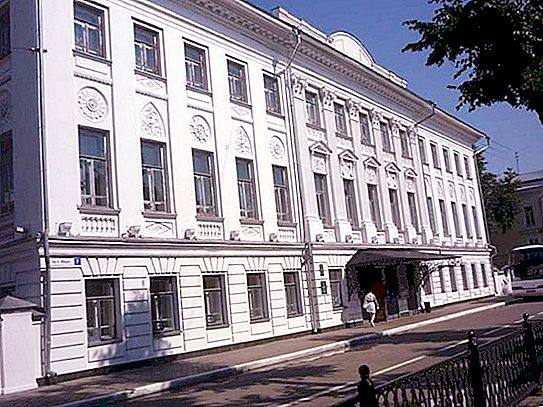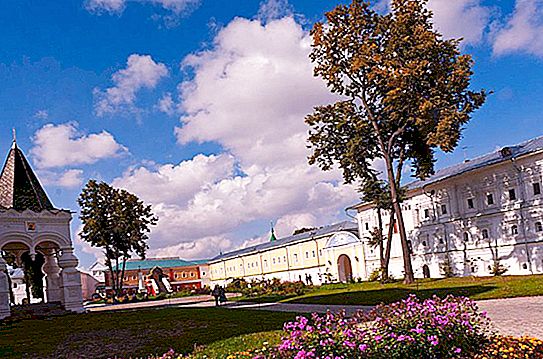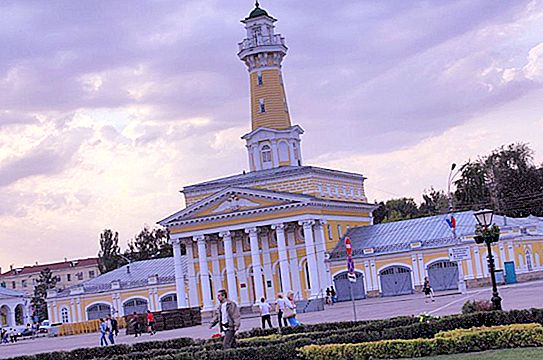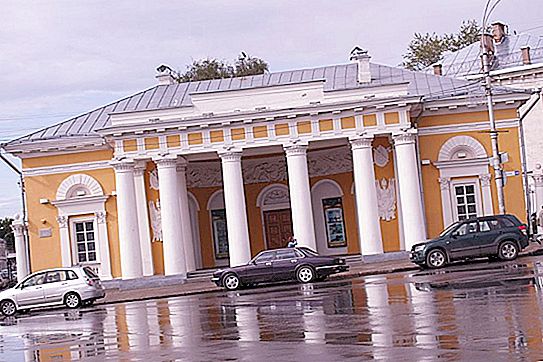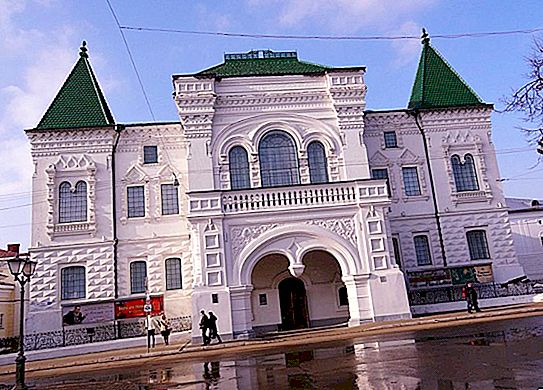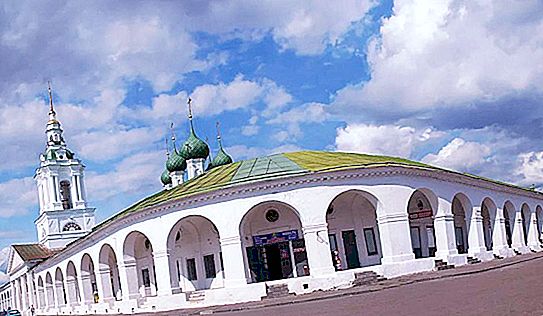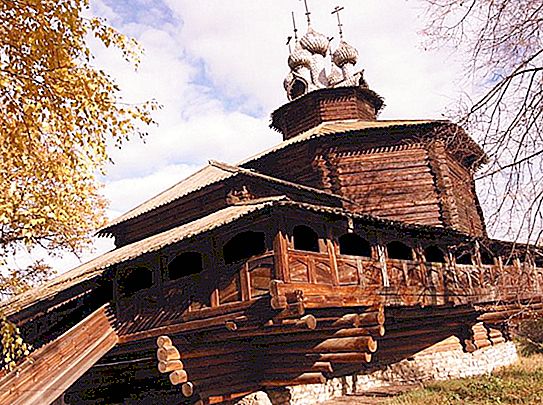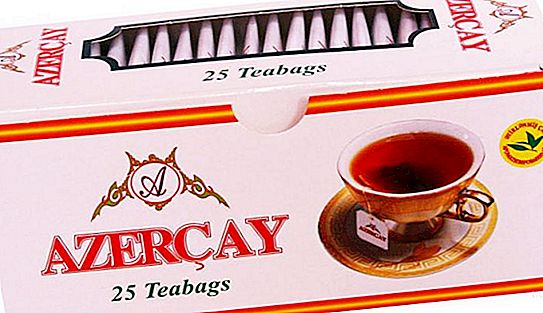Kostroma is one of the pearls of the Golden Ring of Russia tourist route. Since the 13th century, the city has played a prominent role in the formation of statehood; at the present stage, it has been given the status of a “historical settlement”. Where is it better to start exploring the city? Tourists are invited to the museum-reserve of the Kostroma region. It is one of the largest exhibition sites in Russia, where you can trace the history of Kostroma and the country from ancient times to the present.
History of creation
The Kostroma Historical, Architectural and Art Museum-Reserve was founded at the end of the 19th century and became one of the pioneers of museum business. The first expositions were located in the halls of the Noble Assembly, where the public was offered three rooms - ethnographic, church, prehistoric. With the opening of the Romanovsky Museum in 1913, historical collections were transferred to new spacious halls and received a permanent location.
The increase in space served as a start for replenishing funds and increasing exhibition space. Romanovskaya and numismatic collections were added to existing exhibitions. After nationalization, the museum received a new name and was dedicated to the history of the region, in addition, three new halls were arranged - art, handicrafts and natural history. During this period, the Kostroma Museum received unique exhibits; they came to the funds in connection with the expropriation, closing of churches, dispossession and other “cleanings”.
Values flocked from all corners of the Kostroma province, the houses of merchants, boyars, sacristies of the three most ancient monasteries of Russia, private collections of paintings, sculptures from the estates of landowners, etc. were assigned to historical rarities. The rapidly growing collection required additional depositories and exposition halls. They decided to expand the capacity of the museum due to seized real estate. The cultural center was transferred to the Ipatiev Monastery. During the Great Patriotic War, the former monastery was practically inactive, rare excursions were carried out only within the sacristy of the Holy Trinity Cathedral.
Creation time
The resumption of work occurred only after 1945, and in 1946 the museum received at its disposal the entire complex of buildings of the Ipatiev Monastery. An exposition dedicated to the monastery and many other closed churches of Kostroma was opened in Trinity Cathedral. In 1958, the museum moved into a new status and became known as the Kostroma State Historical and Architectural Museum-Reserve. In addition to the name, the new position brought significant preferences and more funding, which helped to save many historic buildings from destruction.
Thanks to the efforts of museum staff, all the buildings of the Ipatiev Monastery were restored, the work carried out allowed the original paintings to be opened inside the temples of the complex, and many monuments of wooden architecture were preserved. In 1966, an art department was opened, which pretty quickly turned into the status of the Art Museum, which became a branch of the Kostroma Museum-Reserve. The collection of paintings and sculptures was housed in the Romanovsky house.
Recent story
The change of government in the 90s of the last century caused a crisis in the structures of all museums in Kostroma. Most of the monastery complexes were returned to the communities of believers, the same situation developed around Ipatievsky, Epiphany and other monasteries, where the branches of the Kostroma Museum-Reserve were located. The withdrawal of museum funds was gradual and painful.
In 1990, the Refectory Corps of the Epiphany Monastery moved to the diocese; from 1994 to 2004, the buildings of the Ipatiev Monastery were liberated. The last reorganization of the museum-reserve took place in 2005 and united the two largest museums of Kostroma - the art and historical-architectural. In the Ipatiev Monastery, the Church Historical and Archaeological Museum of the Russian Orthodox Church in the Kostroma Diocese with rich funds is now operating.
The main complex of buildings
The main part of the Kostroma Museum-Reserve consists of five historical buildings:
- The Romanovsky Museum offers a unique collection of paintings by famous Russian artists Makovsky, Aivazovsky, Schilder and others, including those who came from Kostroma lands (Chestnyakov, Ladyzhensky, Kupreyanov, etc.)
- Fire tower - in the building there is an excursion department, where you can sign up for a city tour, a museum, choose a tourist route within the city and region.
- Fish Row - today it is an art gallery where temporary exhibitions are held, art studios for children and adults work.
- Guardhouse. Here is the military-historical department of the Kostroma Museum-Reserve. The collection includes cold steel and firearms, military uniforms. The exposition tells about the military history of the region. Visitors are offered to make a memorable photo in military uniforms of the 19th century.
- The noble assembly invites you to an exhibition dedicated to the history of the visit of Emperor Nicholas II to Kostroma (1913), as well as exhibits telling about the history of Kostroma and the life of the local nobility in the 19th century. The museum has art and theater studios, interactive tours are conducted.
Kostroma Historical and Architectural Museum-Reserve is the largest complex in the Central Federal District. The reserve includes 17 branches located in the city and the region.
Description and unique collections
The Kostroma Museum-Reserve is annually visited by more than 160 thousand tourists. The total number of exhibition areas with permanent exhibitions is located on an area of almost 900 m 2, 225 m 2 has been allocated for temporary exhibitions, funds occupy more than 860 m 2. The museum employs 425 employees, of which 132 are professionals. The structure of the institution includes an extensive archive with a large number of ancient manuscript books, a library of scientific literature, restoration workshops in the areas of ceramics, fabrics, oil and tempera.
The main values of the collections of the Kostroma State Museum-Reserve:
- A rare book - contains unique editions issued in the 19-20 centuries. The collection includes patrimonial books, manuscripts, military literature (charters, maps, etc.), memoirs, diaries and much more.
- The archaeological collection includes objects of the history of the region of the 12-17th centuries, archaeological finds from the surrounding barrows, objects of the ancient period. The most valuable are the Galich treasure (20 storage units) and 500 items of mound antiquities of the 12-13th century.
- Numismatics, faleristics and bonistics have 64 unique items from the Great and Kings series (a series of medals with portraits of the Russian principality and tsars).
- The Graphics Fund includes 1200 works by E. Chestnyakov (graphics, ceramics, paintings), 86 works by Peter and Evgraf, graphic works by Kupriyanov (71 units), and a collection of Russian popular popular print.
- "Replicated Graphics" - a collection of posters of the military periods (1 and 2 World Wars, Civil War).
- Foundation “Fabrics. Leather ”has a unique collection of albums with samples of products from Kostroma manufactories (more than 100 items).
Excursion programs
In the arsenal of the Kostroma historical and architectural museum-reserve there are more than 70 excursions in the main complex, branches, tours in the city and the region. The main excursion programs are as follows:
- "Romanovs and Kostroma region."
- "Burlatsky fun."
- "Kostroma in the nobility."
- City tour.
- "Snow Maiden's Tales."
- "Kostroma - the golden domes."
- "Kostromushka is a forest side."
- "Kostroma is a merchant’s town, hand-crafted."
- "Provincial stories."
- The Examiner.
- "When the light goes out in the museum."
Part of the excursions is theatrical, the guide guides the tourist through time and events in the costume of the time he is talking about. The programs are designed in such a way that each participant is involved in the process of learning, discovering ancient fun, ancient Russian traditions, mastering the basics of folk crafts and getting a charge of good mood.
Main excursions in the museums of the reserve
In each of the buildings of the Kostroma Museum-Reserve complex, excursions are held on a permanent exhibition. Visitors are invited to:
- Museum Noble Assembly - “Provincial stories. Letters from the past ”, address - Prospekt Mira, building 7 (cost from 100-150 rubles).
- The Romanov Museum - “Kostroma Boyars” (cost 40-80 rubles), “Three Centuries of Art” (70-120 rubles). Address - Peace Avenue, Building 5.
- Guardhouse - “Russia and the Russian Empire”, “From the collapse of the empire to the Great Victory”, “From the Soviet army to the army of the Russian Federation” (the cost of excursions is from 100 to 150 rubles). Address - Lenin Street, building 1/2.
- The Museum of Local Lore - a sightseeing tour of the main exposition, the halls display objects of the V. Tropinin Museum, the Arkhangelskoye, Ostankino Museum-Estates, as well as materials from the Battle of Borodino panorama, the History Museum, etc. Address - ul. Dzerzhinsky, building 9B (ticket price - 150-200 rubles).
- The repository - temporary exhibitions from the funds. Address - Ave. Mira, building 5A.
Interesting vernissages are constantly held in the Fish Rows complex, where the visitor gets acquainted with the canvases of contemporary artists or venerable celebrities, whose work is carefully stored in the vaults and funds of the Kostroma Museum-Reserve. Kostroma is a city where tourists will always be welcome, and on each street of the old center unique houses, buildings, ancient temples and churches await.
Sloboda
The second notable city complex is the Kostroma Sloboda Museum Reserve. It is located behind the wall of the Ipatiev Monastery. In the open space of the landscape park collected monuments of wooden architecture. The territory is cut by several tributaries of the river, light wooden bridges are thrown across them. In general, the park is interesting, even if you are not too interested in antiquities.
The museum was created to preserve ancient wooden buildings that fell into the flood zone of the Gorky Hydroelectric Power Station. The work of the expeditions for the selection of objects was carried out by the Academy of Architecture of the USSR from the late 40s of the last century. The first exposition of the building was the Church of the Transfiguration of 1713 built from the village of Spas-Vezha.
In 1958, another expedition was equipped to cover remote areas, the main composition of which was formed from specialists from the Kostroma research, production and restoration workshop. The results of their work were several unique ancient buildings. The Church of the Cathedral of the Virgin Mary, dating from 1552, is recognized as the oldest monument of wooden architecture. Kostroma Sloboda occupies 10 hectares on the arrow of the inflow of the Kostroma River into the Volga. Due to this situation, the area looks picturesque and pleases the eye at any time of the year.
Exhibits
The ethnographic complex is located in the city limits of Kostroma. The Kostroma Sloboda Museum-Reserve at the present stage offers for inspection 5 religious buildings, 8 residential buildings and 4 unique outbuildings. In addition to large exhibits, there are also small architectural forms, such as wells. The exhibits were brought from all over the Kostroma region and carefully restored.
Each building of the Kostroma architectural reserve is unique, most of it is available for internal inspection. In the Church of Elijah the Prophet, the interior is of particular interest - in the unheated part of the building is a vault covered with a homespun canvas with painted images of scenes of the Passion of Christ, and the restored iconostasis in four tiers. When the temple was built is unknown.
Skobelkin's peasant hut is interesting in mid-13th century architecture - the building stands on a high basement, cut down from massive logs. In the canopy fall through the "passage locker". The house was built for centuries, so most of the furniture is cut into the wall. So, an integral part of the construction are the bed, three built-in kitchen cabinets with carved doors, benches. One of the rooms was devoid of windows; it served as a prayer room for the Old Believers, who once lived in the house. Today in the hut interactive programs for children are held.
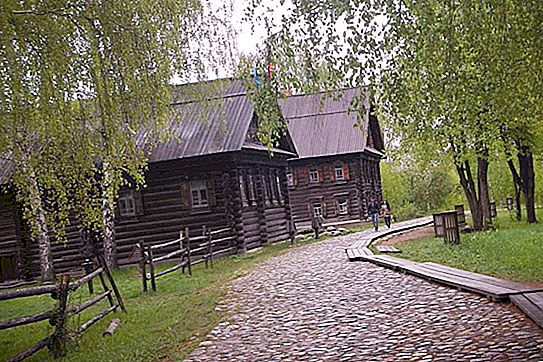
No less interesting are the baths from the village of Vederkino. The village was located in a flooded lowland, so all buildings were installed on piles, including baths. “Kostroma Sloboda” is a compact open-air park where you can not only see old architecture, get acquainted with peasant life, crafts, but also come to master classes, lectures, exhibitions and holidays. The cultural center has developed educational programs that are interesting for adults and children.
